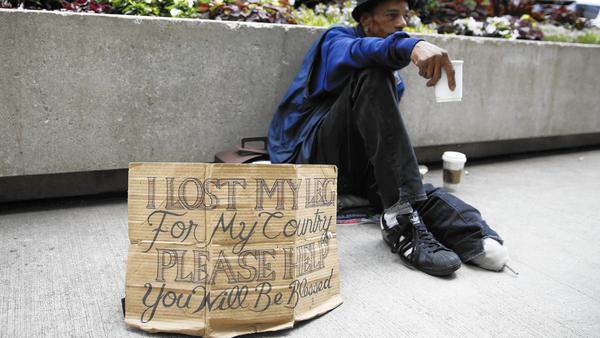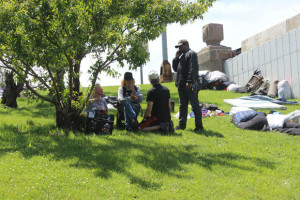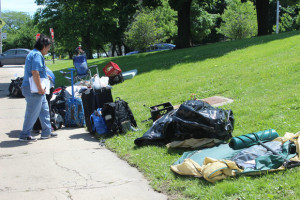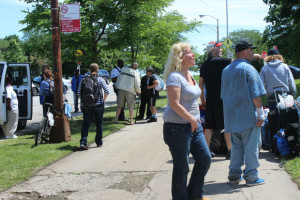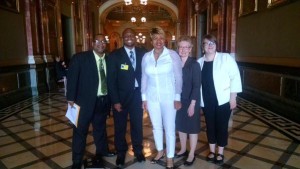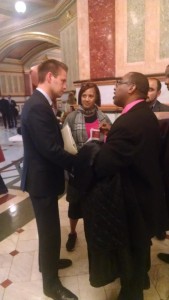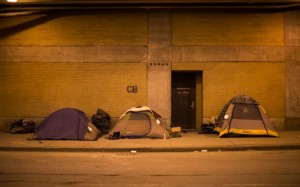By Stephanie Lulay
WEST LOOP — After fielding complaints about new rental developments in the West Loop for months, one alderman has a new word to describe neighbors’ opposition to renters: “discrimination.”
At a Tuesday night meeting to consider a proposed 80-unit apartment building near the Morgan ‘L’ station, Ald. Walter Burnett Jr. (27th) said that renters have just as much of a right to live in the West Loop as condo owners and homeowners do.
“Quite frankly, the [opposition to rentals] in this neighborhood is a bunch of bunk,” Burnett said. “Most people in this neighborhood have been renting out their condos for a long time.”
From now on, the alderman said all developers who want to build in the West Loop neighborhood located in the 27th Ward will be required to dedicate 10 percent of units built on site for affordable housing.
“If this project is approved, they are going to have to do some affordable housing in the building. I’m not going to let any [other developer] buy out of affordable housing in this neighborhood because I am feeling so much discrimination, tension in this neighborhood,” Burnett said. “It’s going to have to be a mixed neighborhood. Don’t no one group own no neighborhood in the City of Chicago. This is America.”
Under the city’s current Affordable Requirements Ordinance rules, developers are required to put affordable apartments in all new developments of 10 or more units that seek zoning changes from the city or use city land or subsidies. But developers can skirt those rules by opting to make an “in lieu” payment.
In the West Loop, developers almost always make the “in lieu” payment, Burnett said.
Burnett’s new affordable housing rules come after another recent meeting where many longtime West Loop residents said they opposed a proposed development at 111 S. Peoria because it would bring more renters to the area. Burnett said the reaction made him think that the West Loop was starting to become “a bigot neighborhood.”
“When I left that meeting, I felt that [some residents] were very discriminatory against [renters]. I felt bad that there was people sitting in that room that rent. You don’t actually recognize that you are talking about people in the meetings. I thought it was wrong, I thought it was bad, and I tell you… it turned me off,” Burnett said.
On Tuesday night, resident Mike Samson, who has lived in the neighborhood for 10 years, said that his neighbors are very concerned about the “stampede” of rental buildings being developed in the neighborhood.
“Rental buildings tend to attract people who come and go quite quickly. The turnover is rapid. They don’t help to stabilize the neighborhood,” Samson said. “They don’t contribute in the long term to the neighborhood. Owners contribute in the long term to the neighborhood.”
The alderman said that all sorts of people choose to rent apartments, and that he doesn’t make decisions “based on how some people feel about other people.”
“Just because people are renting, don’t mean that they’re slouches. It don’t mean that they can’t contribute to the community. They’re no different than anybody else,” Burnett said. “Some people don’t want to rent, some people don’t want to buy. Some people don’t want to get married, do a lot of things. You know, everybody’s not the same.”
A 15-year resident who lives near Mary Bartelme Park said that neighbors aren’t discriminating against renters. They just want to protect what they’ve built, she said.
“I think we want to create our home and keep it that way, and I really resent everyone calling us bigots because we want owners [in the neighborhood],” the woman said.
West Loop developers seeking to build rental units have previously said that it difficult to finance a large condo building project.
Architect Patrick FitzGerald plans to develop a 10-story building at 922 W. Lake St. just west of the existing Lake Street Lofts rental building in the West Loop.
Fitzgerald said that Lake Street Lofts does not experience high turnover. Nearly 70 percent of tenants living in the building have resided there for four years or more, according to Property Manager Marc Koronkiewicz.
“Rental housing is a lifestyle choice that a lot of people make, and there ought to be an option available for them, too, particularly with all of the new businesses coming to the area,” FitzGerald said.
Groups split on Lake Street development
If approved, FitzGerald’s Lake Street project would have 80 units, about 66 parking spaces and 2,415 square feet of commercial space at the site, according to Richard Whitney, principal at FitzGerald Associates.The loft apartments would be a mix of studio, one- and two-bedroom units.
The proposed site, currently zoned C1-1 and C1-2, now houses a parking lot. The property’s owner seeks to change the zoning to C1-5.
The landlord currently holds 89 parking spaces for each of the 89 units in the existing Lake Street Lofts building. If the second building is approved and built on the parking lot, the two buildings containing 169 units would share about 66 parking units, Whitney said.
After the Morgan ‘L’ station opened, Lake Street Lofts tenants required less and less parking, FitzGerald said. Today, less than 50 percent of the existing parking spots are leased to tenants, he said.
Two of five West Loop groups have made a recommendation to Burnett concerning the project.
Ben Spies, director of economic development at the Industrial Council of Nearwest Chicago, said the group opposes the Lake Street plan because it does not comply with the Fulton Market Innovation Plan.
The Fulton Market Innovation Plan calls for new residential buildings to only be developed south of Lake Street.
“Our concern is that everybody in the Fulton Market area will ask for their pass,” Spies said.
The West Central Association will likely support the project, said association president Armando Chacon.
“By Department of Planning’s own words, the Land Use Plan is a guide,” Chacon said. “The city does want to bring life to Lake Street, and we agree with that.”
FitzGerald said that the Lake Street block has been residential since the property was first developed in 2000.
“This little piece of Lake Street has been residential for quite some time,” FitzGerald said. “We’re not looking to introduce a new use here. We’re simply looking to expand a use that we already have on land that we already own.”
The West Loop Community Organization and Neighbors of the West Loop plan to make formal recommendations to the alderman next week, leaders said. The Randolph Fulton Market Association has not weighed in on the project, Burnett said.
During an informal poll, a majority of the 50 people in attendance Tuesday night supported the plan.
The 922 W. Lake St. property is owned by Lake Street Lofts LLC, an LLC managed by FitzGerald, according to state records. FitzGerald and his family own the parking lot, according to city zoning documents.
Lake Street Lofts, a historic six-story building built in 1886, was converted into 89 apartments about 15 years ago.
FitzGerald Associates Architects leases office space in the Lake Street Lofts building.

